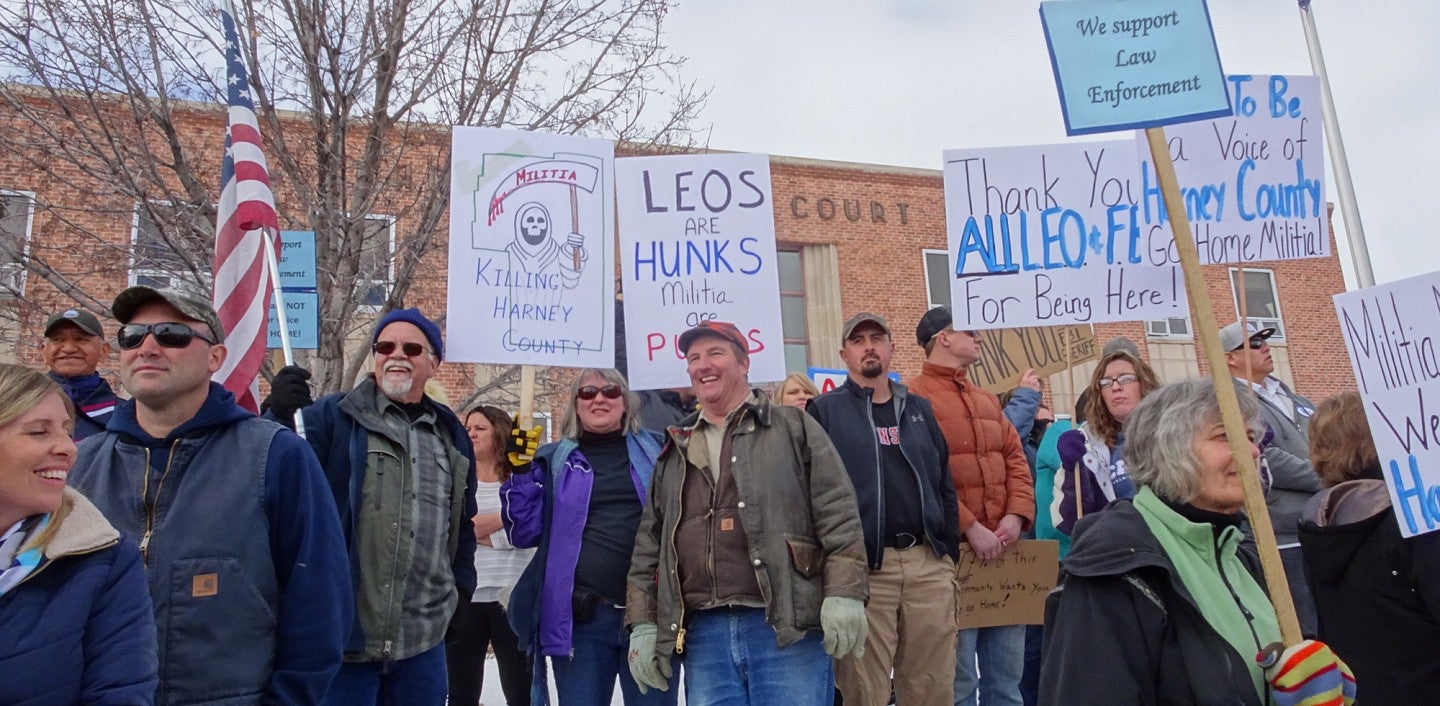
Geographer Peter Walker on the Malheur Occupation
The brave resilience of Harney County residents in opposition to the Malheur occupation could be a model of community building
By Emily Halnon • Photo by Peter Walker • April 14, 2020
3 min read
University of Oregon geographer Peter Walker was sitting in a packed high school gymnasium during a 2016 town meeting in Burns, Oregon, when a group of men marched in with loaded handguns openly displayed.
A hushed silence washed over the crammed room as the well-armed latecomers slowly spread out to every corner of the building.
“I realized they were tactically positioning themselves for a firefight,” says Walker, who was attending the meeting for his research on the Ammon Bundy-led occupation of the Malheur National Wildlife Refuge. The men were among the militants who had seized the refuge in their quest to return that swath of federal land to local ownership.
But the community was not interested in joining the Bundy rebellion. They had congregated on that brisk January evening to discuss the militia’s unwelcome presence in their town.
Steve Grasty, the Harney County judge presiding over that meeting, broke the tense silence as he walked up to one of the occupation leaders and told him to leave. The community members rose to their feet and began to echo Grasty’s demand. Their voices surged in unison.
“Go home. Go home. Go home,” the crowd chanted, with a sea of fingers aimed at the heavily armed occupiers.
“It was one of the greatest displays of courage I’ve witnessed,” Walker recalled.
Walker believes the brave resilience he saw that night—and throughout the occupation—was driven by Harney County’s rich history of using collaboration to solve contentious problems, including the very issues the Bundys were trying to leverage into an armed rebellion.
Harney citizens didn’t want to fight with the federal government because they had invested decades in more effective approaches. While collaboration has not been without challenges in Eastern Oregon, Walker points to Harney County as inspiration for other regions as America contends with heightened tensions over public land and resources.
“Ammon Bundy claimed that the county’s resource problems could be solved only by armed rebellion against the federal government,” Walker says. “But at the time of the takeover, many residents specifically rejected that model in favor of collaboration to tackle land and resource management.”
Walker believes the occupation failed, in part, because the Bundys didn’t do their homework before arriving in Eastern Oregon, looking to transfer public land to private ownership—a move they hoped would trigger similar uprisings nationwide. The region probably seemed primed for rebellion, with many ranchers and farmers, groups that are often more conservative, resource-dependent, and more likely to balk at perceived federal overreach.
Had the Bundys paid attention to the work that had been transpiring for years, they would have realized Harney County “had become something of a poster child for collaborative land-use problem solving,” Walker says.
But, Walker, who jokes that he was a part-time resident of Harney County during the occupation, has completed reams of his own homework and developed an extensive body of research. He’s published a full-length book, Sagebrush Collaboration: How Harney County Defeated the Takeover of the Malheur Wildlife Refuge, offered insights for numerous media outlets, delivered public presentations, and provided testimony to Congress during a hearing on how to protect federal employees from threats and violence.
Walker says Harney County’s support for collaboration boils down to realizing the benefit of approaching prickly issues in some simple, pragmatic, and effective ways, like bringing neighbors together to talk, listen, and get to know one another. It’s taken patience and practice, but the county keeps returning to it because it’s delivered solutions to land and resource management issues.
Community members are invested in collaboration, Walker says, because they feel it gives them influence on public land and resource issues, including forest health initiatives, protections for Steens Mountain, and management of the Malheur National Wildlife Refuge, the same land the Bundys occupied for 41 days.
Emily Halnon is a staff writer for University Communications.




